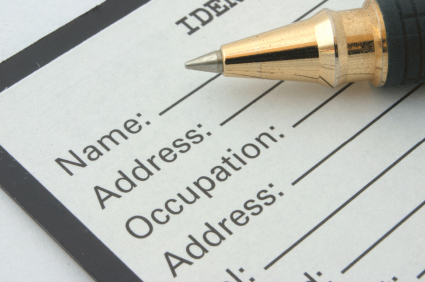Want to learn about the importance of completing an OCF-3 Disability Certificate after your Toronto car accident? Read on.
The OCF-3 Disability Certificate is a form created by the Financial Services Commission of Ontario. Why they created this, along with other silly forms is still a mystery to me, along with personal injury lawyers across Ontario. It all has to do with Ontario’s complicated no-fault accident benefit regime, but that’s the subject of another post.
In any event, following your car accident, your insurance company will send you a booklet of forms. And when I mean booklet of forms, I really mean it. If you don’t like reading, or you don’t like completing standard forms which require a lawyer to understand, then you’ll certainly have issues with these forms. One of the forms is called the OCF-3 Disability Certificate. This is probably the most important and telling form for you to have completed.
The first part of the OCF-3 Disability Certificate is easy enough to complete. Fill out your name, date of birth, address, gender, answer whether or not you were working at the time of the car accident. This is important, because if you check “yes” to this question, then your car insurance company will try to pass the blame of your car accident over to Worker’s Compensation (WSIB). If your car acccident turns out to be a WSIB case, then the car insurance company doesn’t have to pay a dime! Sneaky form already isn’t it. I wonder who designed it….
The second part of the OCF-3 Disability Certificate asks for your insurance information. If you were a pedestrian at the time of the car accident, then you can fill out the insurance information of the other driver that hit you. If you didn’t have car insurance at the time of the accident, and the driver that hit you at the time of the car accident didn’t have any car insurance either, then there’s a chance you might be eligible to claim through the Motor Vehicle Accident Claims Fund.
The third part of the OCF-3 Disability Certificate requires the injured party to provide a description of the car accident, along with the injuries sustained. Be careful in this section because it might come back to haunt you. If the description of your injuries or of the car accident itself doesn’t jive with the description you provide to the police, to the insurance company, or to your lawyer later on, then you will have a credibility issue to face down the line. Example: Sometimes accident victims forget to mention that they lost consciousness following their car accident (sustained a head injury). They might only focus on their orthopaedic injuries (broken bones, back pain, etc.). Years later, the broken bones will likely heal, but the brain injury symptoms might persist (loss of memory, loss of concentration, headaches, blurred vision, dizziness, depression etc.). Insurance companies question EVERYTHING. They will likely question where all these symptoms came from. Did they just pop out of nowhere!?!?! When you tell them that the brain injury symptoms arose from the car accident, they may doubt it considering there was little or no evidence at the start of your claim to suggest a brain injury.
Other times, we see clients forgetting the precise location of their car accident, or gave incorrect details as to how the car accident happened. This again raises a flag with respect to credibilty. When insurers are beating on the fraud drum all day long to Ontario MPPs, I recommend completing this part of of the form as accurately as possible.
 The next part of the OCF-3 Disability Certificate needs to be completed by your family doctor, treating surgeon, physiotherapist, psychologist, speech language pathologist, or any other health care professional listed on the form. They’re required to identify what your injuries are, provide a prognosis for your recovery (which is very difficult to do considering they’ve likely just seen you once following your car accident and they saw you very shortly after the car accident…and they may not even know you very well!). They also have to identify whether or not you will be able to return to work, or engage in your normal activities of daily living. Again, this is another unfair question particularly for a doctor who likely doesn’t know you or your job/routine very well. Even if they do, it may be impossible to answer because not all of the diagnostic testing or imaging is yet complete. In any event, they’re asking your doctor to gaze into a crystal ball and guesstimate if you’re going to be ok in a week’s time, 3 weeks time, 12 weeks time etc. Put a lawyers’ critical mind into a doctors’s and no doctor would ever complete the OCF-3 Disability Certificate.
The next part of the OCF-3 Disability Certificate needs to be completed by your family doctor, treating surgeon, physiotherapist, psychologist, speech language pathologist, or any other health care professional listed on the form. They’re required to identify what your injuries are, provide a prognosis for your recovery (which is very difficult to do considering they’ve likely just seen you once following your car accident and they saw you very shortly after the car accident…and they may not even know you very well!). They also have to identify whether or not you will be able to return to work, or engage in your normal activities of daily living. Again, this is another unfair question particularly for a doctor who likely doesn’t know you or your job/routine very well. Even if they do, it may be impossible to answer because not all of the diagnostic testing or imaging is yet complete. In any event, they’re asking your doctor to gaze into a crystal ball and guesstimate if you’re going to be ok in a week’s time, 3 weeks time, 12 weeks time etc. Put a lawyers’ critical mind into a doctors’s and no doctor would ever complete the OCF-3 Disability Certificate.
Maybe this is why so many doctors I’ve met and spoken to about this form HATE completing the OCF-3 because it asks unfair questions and doesn’t allow any room for explanantion. Did I mention that doctors can’t bill OHIP for completing the form? This takes away from their normal billing routine and slows them down. They have to bill the insurance company directly for their time. Most insurers won’t pay over $125 (and that’s being generous) or so for the completion of the form. And lots of insurers don’t pay the doctors in a timely manner or at all in extreme cases. Another reason why doctors hate complete the OCF-3 Disability Certificate forms.
So, what happens if you don’t complete the OCF-3 Disability Certificate? Good question. Here’s my straight to the point, no legalese answer. No completed form: No Benefits will be paid by the car insurance company. It’s that simple.
If you have more questions on how to properly complete your OCF-3 Disability Certificate, or want some more tips in terms of how not to get tricked in completing these forms, contact Goldfinger Injury Lawyers info@goldfingerlaw.com or toll free at 1-877-730-1777
 Toronto Injury Lawyer Blog
Toronto Injury Lawyer Blog




